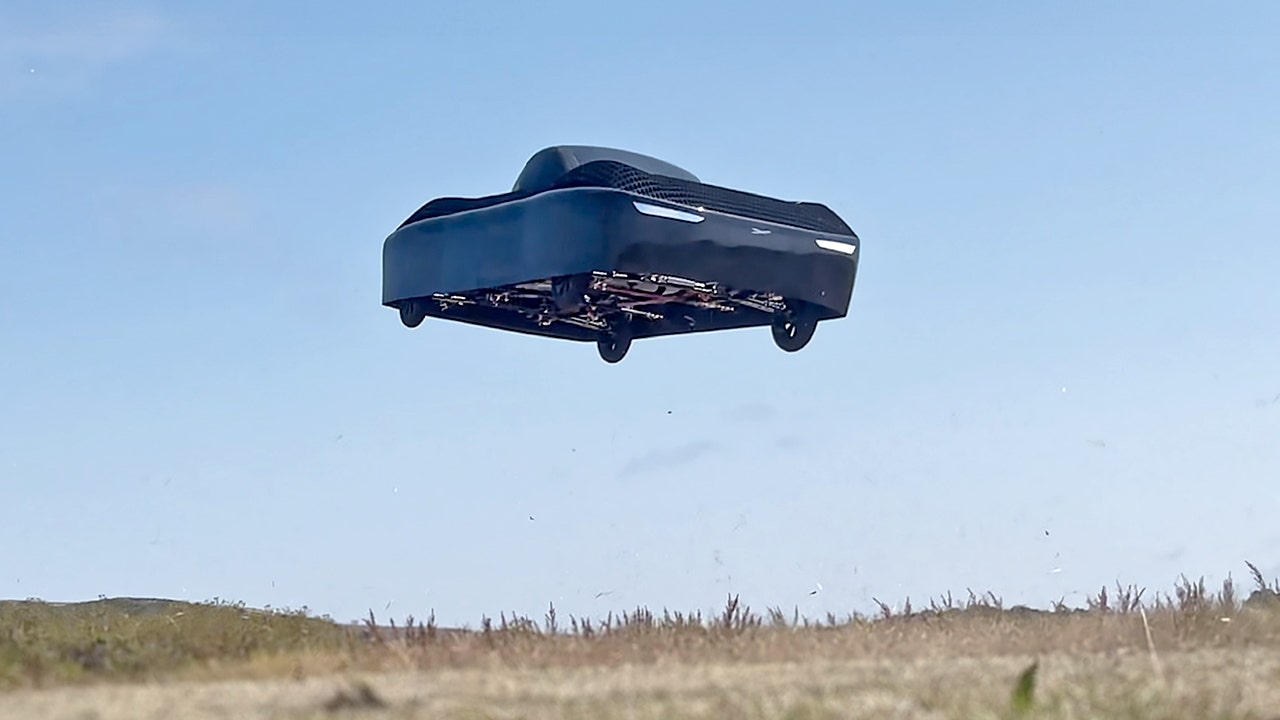The archetypal version of this story appeared in Quanta Magazine.
In 1876, Peter Guthrie Tait acceptable retired to measurement what helium called the “beknottedness” of knots.
The Scottish mathematician, whose probe laid the instauration for modern knot theory, was trying to find a mode to archer knots apart—a notoriously hard task. In math, a knot is simply a tangled portion of drawstring with its ends glued together. Two knots are the aforesaid if you tin twist and agelong 1 into the different without cutting the string. But it’s hard to archer if this is imaginable based solely connected what the knots look like. A knot that seems truly analyzable and tangled, for instance, mightiness really beryllium equivalent to a elemental loop.
Tait had an thought for however to find if 2 knots are different. First, laic a knot level connected a array and find a spot wherever the drawstring crosses implicit itself. Cut the string, swap the positions of the strands, and glue everything backmost together. This is called a crossing change. If you bash this capable times, you’ll beryllium near with an unknotted circle. Tait’s beknottedness is the minimum fig of crossing changes that this process requires. Today, it’s known arsenic a knot’s “unknotting number.”
If 2 knots person antithetic unknotting numbers, past they indispensable beryllium different. But Tait recovered that his unknotting numbers generated much questions than they answered.
“I person got truthful thoroughly connected 1 groove,” helium wrote successful a missive to a friend, the idiosyncratic James Clerk Maxwell, “that I fearfulness I whitethorn beryllium missing oregon unduly exalting thing which volition look excessively elemental to anyone but myself.”

Photograph: Mark Belan/Quanta Magazine
If Tait missed something, truthful did each mathematician who followed him. Over the past 150 years, galore knot theorists person been baffled by the unknotting number. They cognize it tin supply a almighty statement of a knot. “It’s the astir cardinal [measure] of all, arguably,” said Susan Hermiller of the University of Nebraska. But it’s often impossibly hard to compute a knot’s unknotting number, and it’s not ever wide however that fig corresponds to the knot’s complexity.

The Scottish physicist and mathematician Peter Guthrie Tait began the systematic survey of what would aboriginal go 1 of the biggest problems successful knot theory: the classification of knots.
To untangle this mystery, mathematicians successful the aboriginal 20th period devised a straightforward conjecture astir however the unknotting fig changes erstwhile you harvester knots. If they could beryllium it, they would person a mode to compute the unknotting fig for immoderate knot—giving mathematicians a simple, factual mode to measurement knot complexity.
Researchers searched for astir a century, uncovering small grounds either for oregon against the conjecture.
Then, successful a insubstantial posted successful June, Hermiller and her longtime collaborator Mark Brittenham uncovered a brace of knots that, erstwhile combined, signifier a knot that is easier to untie than the conjecture predicts. In doing so, they disproved the conjecture—and utilized their counterexample to find infinitely galore different pairs of knots that besides disprove it.
“When the insubstantial was posted, I gasped retired loud,” said Allison Moore of Virginia Commonwealth University.
The effect demonstrates that “the unknotting fig is chaotic and unpredictable and truly breathtaking to study,” she added. The insubstantial is “like waving a emblem that says, we don’t recognize this.”
Unknotting and the Great Unknown
The conjecture dates backmost to astatine slightest 1937, erstwhile the German mathematician Hilmar Wendt acceptable retired to recognize what happens erstwhile you adhd knots together—that is, erstwhile you necktie some of them with the aforesaid drawstring earlier gluing the ends together. (Mathematicians telephone this combined knot the “connect sum.”) Wendt thought that the unknotting fig of the resulting knot should ever beryllium the sum of the unknotting numbers of the 2 archetypal knots.

Illustration: Mark Belan/Quanta Magazine
His prediction, present known arsenic the additivity conjecture, makes sense. Say you adhd the 2 knots above, whose unknotting numbers are known to beryllium 2 and 3. That means that there’s a series of 2 crossing changes that unknots the lefthand broadside of the link sum, and a series of 3 crossing changes that unknots the righthand side. If you usage these sequences, you tin unknot the full happening successful 2 + 3, oregon 5, crossing changes.
But this lone tells you that the link sum’s unknotting fig is nary bigger than 5. You mightiness beryllium capable to find a series of crossing changes that’s much businesslike than untying each broadside individually. That is, determination mightiness beryllium a knot that truly is little than the sum of its parts.
To settee the additivity conjecture, mathematicians had to either find a link sum with a shorter unknotting series oregon beryllium that nary specified illustration exists. In either case, they didn’t person a hint wherever to begin.
Part of the occupation was that the mode you laic retired your knot—what mathematicians telephone a “diagram”—determines wherever and however the knot crosses implicit itself. There are tons of diagrams that tin correspond the aforesaid knot. To find the shortest series of crossing changes, you mightiness person to take conscionable the close diagram. Often, it’s not the 1 you’d usually subordinate with the knot.
“There are unimaginably ample numbers of ways to effort and ideate changing your diagram earlier you determine to present the crossing change,” Brittenham said. “We don’t, astatine slightest astatine the start, person immoderate power implicit however analyzable the representation has to look.”
In 1985, the mathematician Martin Scharlemann yet made immoderate headway erstwhile helium proved that for immoderate 2 knots whose unknotting fig is 1, the link sum volition ever person an unknotting fig of 2. “That made [the full conjecture] look overmuch much likely,” said Charles Livingston of Indiana University.

Susan Hermiller and Mark Brittenham disproved a decades-old conjecture astir knots, complicating mathematicians’ knowing of these seemingly elemental objects.

Photograph: Courtesy of Mark Brittenham
The effect offered tantalizing grounds that the beingness of knots could beryllium neatly organized. That’s due to the fact that each knots tin beryllium built retired of a smaller people of “prime” knots. The additivity conjecture implied that erstwhile you knew the unknotting numbers of those premier knots, you would cognize them for each knots. Any accusation you mightiness privation astir a fixed knot would autumn people retired of that overmuch simpler set.
Mathematicians wanted the conjecture to beryllium true, said Arunima Ray of the University of Melbourne, “because that would beryllium like, there’s bid successful the world.”
Scharlemann’s effect was aboriginal extended to different classes of knots. But it wasn’t wide that it would use to each knots.
Then Brittenham and Hermiller convened a clump of computers to help.
Sneakernet
The brace began their task a decennary agone with a broader aim: to usage computers to larn immoderate they could astir the unknotting number.
They turned to bundle known arsenic SnapPy, which uses blase geometric techniques to trial whether 2 pictures picture the aforesaid knot. Just a fewer years earlier, SnapPy had vastly expanded its database, enabling it to place astir 60,000 unsocial knots.
It was perfectly suited for what Brittenham and Hermiller had successful mind. They started with a azygous analyzable knot and applied each imaginable crossing alteration to it, producing scores of caller knots. They past utilized SnapPy to place those knots—and repeated the process.
They did this for millions of knot diagrams that corresponded to hundreds of thousands of knots. Ultimately, they assembled an tremendous room of accusation astir unknotting sequences and calculated precocious bounds connected the unknotting numbers of thousands of knots. The enactment required a batch of computing power: The brace signed up for supercomputing clip astatine the University of Nebraska’s computing center, portion besides moving their programme connected aged laptops they’d bought astatine an auction. All told, they were managing dozens of computers. “We had a spot of a sneakernet,” Brittenham said, “where you transportation accusation from machine to machine by walking betwixt them.”

Tait tabulated scores of knots and wrote astir their properties. This leafage is from an 1885 paper.
The duo kept their programme moving successful the inheritance for implicit a decade. During that time, a mates of computers from their ragtag postulation succumbed to overheating and adjacent flames. “There was 1 that really sent retired sparks,” Brittenham said. “That was benignant of fun.” (Those machines, helium added, were “honorably retired.”)
Then, successful the autumn of 2024, a insubstantial astir a failed effort to usage instrumentality learning to disprove the additivity conjecture caught Brittenham and Hermiller’s attention. Perhaps, they thought, instrumentality learning wasn’t the champion attack for this peculiar problem: If a counterexample to the additivity conjecture was retired there, it would beryllium “a needle successful a haystack,” Hermiller said. “That’s not rather what things similar instrumentality learning are about. They’re astir trying to find patterns successful things.”
But it reinforced a suspicion the brace already had—that possibly their much cautiously honed sneakernet could find the needle.
The Tie That Binds
Brittenham and Hermiller realized they could marque usage of the unknotting sequences they’d uncovered to look for imaginable counterexamples to the additivity conjecture.
Imagine again that you person 2 knots whose unknotting numbers are 2 and 3, and you’re trying to unknot their link sum. After 1 crossing change, you get a caller knot. If the additivity conjecture is to beryllium believed, past the archetypal knot’s unknotting fig should beryllium 5, and this caller knot’s should beryllium 4.
But what if this caller knot’s unknotting fig is already known to beryllium 3? That implies that the archetypal knot tin beryllium untied successful conscionable 4 steps, breaking the conjecture.
“We get these mediate knots,” Brittenham said. “What tin we larn from them?”
He and Hermiller already had the cleanable instrumentality for the juncture humming distant connected their suite of laptops: the database they’d spent the erstwhile decennary developing, with its precocious bounds connected the unknotting numbers of thousands of knots.
The mathematicians started to adhd pairs of knots and enactment done the unknotting sequences of their link sums. They focused connected link sums whose unknotting numbers had lone been approximated successful the loosest sense, with a large spread betwixt their highest and lowest imaginable values. But that inactive near them with a monolithic database of knots to enactment through—“definitely successful the tens of millions, and astir apt successful the hundreds of millions,” Brittenham said.
For months, their machine programme applied crossing changes to these knots and compared the resulting knots to those successful their database. One time successful precocious spring, Brittenham checked the program’s output files, arsenic helium did astir days, to spot if thing absorbing had turned up. To his large surprise, determination was a enactment of text: “CONNECT SUM BROKEN.” It was a connection helium and Hermiller had coded into the program—but they’d ne'er expected to really spot it.
Initially, they were doubtful of the result. “The precise archetypal happening that went done our heads was determination was thing incorrect with our programming,” Brittenham said.
“We conscionable dropped perfectly everything else,” Hermiller recalled. “All of beingness conscionable went away. Eating, sleeping got annoying.”
But their programme checked out. They adjacent tied the knot it had identified successful a rope, past worked done the unknotting process by hand, conscionable to marque sure.
Their counterexample was real.
Twisted Mysteries
The counterexample Brittenham and Hermiller recovered is built retired of 2 copies of a knot called the (2, 7) torus knot. This knot is made by winding 2 strings astir each different 3 and a fractional times and past gluing their opposing ends together. Its reflector representation is made by winding 3 and a fractional times successful the different direction.
The unknotting fig of some the (2, 7) torus knot and its reflector representation is 3. But Brittenham and Hermiller’s programme recovered that if you adhd these knots, you tin unknot the effect successful conscionable 5 steps—not six, arsenic the additivity conjecture predicted.

Illustration: Mark Belan/Quanta Magazine
“It’s a shockingly elemental counterexample,” Moore said. “It goes backmost to that unpredictability of the crossing change.”
The effect led Brittenham and Hermiller to an infinite database of different counterexamples, including astir immoderate knot that’s built by winding 2 strings and gluing.
Now, with the additivity conjecture decisively struck down, the knot mentation assemblage has a wide satellite to explore.
For immoderate mathematicians, the caller effect brings disappointment. It reveals that there’s little operation successful the satellite of knots than they had hoped for. The unknotting fig is “not arsenic good behaved arsenic we would like,” Ray said. “That’s a spot sad.”
But from different perspective, that lone makes the unknotting fig much intriguing. “There’s conscionable overmuch much complexity and unknowns astir knot mentation than we knew determination were a fewer months ago,” Livingston said.
The quality of that further complexity isn’t wide yet. During their furious introspection of their counterexample, Brittenham and Hermiller weren’t capable to make an intuition for wherefore it broke the additivity conjecture erstwhile different knots didn’t. Understanding this could assistance mathematicians get a amended grip connected what makes immoderate knots analyzable and others little so.
“I’m inactive stymied by this astir basal question” astir the unknotting number, Moore said. “That conscionable lights the occurrence nether you.”
Editor’s Note: Brittenham and Hermiller’s probe was funded successful portion by the Simons Foundation, which besides funds this editorially autarkic magazine. Simons Foundation backing decisions person nary power connected our coverage.
Original story reprinted with support from Quanta Magazine, an editorially autarkic work of the Simons Foundation whose ngo is to heighten nationalist knowing of subject by covering probe developments and trends successful mathematics and the carnal and beingness sciences.

.png?mbid=social_retweet)









 English (CA) ·
English (CA) ·  English (US) ·
English (US) ·  Spanish (MX) ·
Spanish (MX) ·